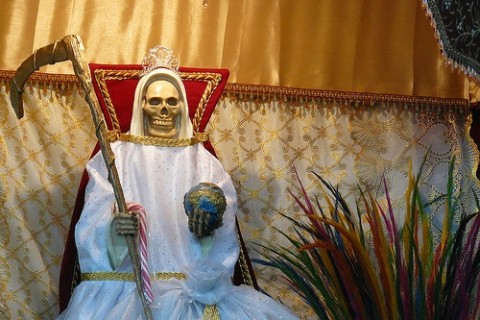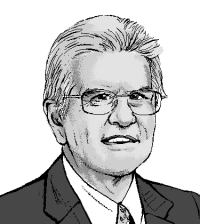Mexico’s crisis of faith

For all the crises and confrontations that the United States faces around the world, some observers think that the most alarming situation of all might be on our own doorstep. Back in 2008, the U.S. Joint Forces Command warned that both Mexico and Pakistan might suffer "rapid and sudden collapse." If Mexico did succumb to its escalating drug wars, that would leave a classic failed state of 110 million people just across the Rio Grande. That figure does not count some 25 million people of Mexican heritage in the U.S.
Whether or not we can realistically talk of state collapse, the Mexican situation is serious. Drug-related violence has claimed some 30,000 lives since 2006, and large areas of the country are under the effective control of one or more of the notorious cartels, gangs and militias. Few weeks go by without the media reporting some massacre of innocents, and police and government officials are regularly targeted.
Read our latest issue or browse back issues.
Lost in most discussions of the crisis is the role of the churches. This in practice means above all the Roman Catholic Church, which theoretically claims the loyalty of at least 80 percent of the population. (Around 6 percent of Mexicans are Protestant.) Although Mexico maintains a strict separation of church and state, nobody denies the enormous role of Catholicism in Mexican society and culture.
How have Christians coped with the horror of living through a virtual civil war? In many instances, clergy and believers have lived up to their ideals. They have behaved heroically, striving to make peace between factions, trying to fulfill social needs in regions where secular government has all but abdicated its power. Individual priests and bishops comfort bereaved families and preach bravely against violence and criminality, at grave risk to their lives. Fearless activism for peace and human rights made Saltillo's legendary bishop José Raúl Vera López a candidate for the Nobel Peace Prize.
Some senior clergy propose long-term solutions for the crisis. Although he is a staunch social and theological conservative, the head of the Mexican church, Cardinal Norberto Rivera Carrera, has opened the door to reforming Mexico's drug laws, suggesting that the issue must be re-framed as a public health problem rather than a matter for the criminal law.
But for all the zeal of such leaders, the drug crisis has exposed some alarming weaknesses in the church, as a traditionally poor society has faced the overwhelming temptations of drug money. One emerging crisis in the church concerns the poor parishes that receive offers of vast gifts from local magnates known to be narcotrafficantes. Although Cardinal Rivera Carrera declares that the church should never accept such dirty money, it is no secret that many priests have used drug money to rebuild churches and launch social welfare projects. This concession obviously compromises their ability to speak out against crime, mayhem and terrorism.
Even more troubling is what the crisis has revealed about the content of the beliefs of many ordinary people—perhaps several millions in all—who unhesitatingly describe themselves as Christian and Catholic but who in fact follow a twisted caricature of orthodox faith, in which religion is wholly separated from morality. Through the centuries, the Mexican church made many compromises with native beliefs, assimilating traditional gods and spiritual beings into the roster of Christian saints, and most observers would applaud these policies as successful examples of inculturation. In some cases, though, poor believers went much further in developing their own alternate and unauthorized forms of folk Catholicism, centered on evil or criminal entities. Whereas these cults were once practiced in the shadows, the drug crisis has brought them into the light, as arrests have revealed that these faiths are practiced among criminals and the underclass.
One terrifying symbol is the skeletal figure of La Santa Muerte, Saint Death, who serves as the gangs' patron saint. As Andrew Chesnut describes in his forthcoming book Devoted to Death (Oxford University Press), Santa Muerte is condemned by the official church but worshiped in countless clandestine shrines. Nor is she the only manifestation of a subversive pseudo-Catholicism that veers close to outright diabolism. Another wildly popular folk saint is the 19th-century bandit Jesús Malverde, "angel of the poor," patron of drug dealers and illegal migrants. Devotees of San Juan Soldado (Soldier John) venerate a man executed in 1938 for raping and murdering an eight-year-old girl. While such beliefs demonstrate a profound faith in spiritual realities, they also show the yawning gulf that separates popular practice from any traditional concept of Christian faith.
If and when Mexico regains social and political stability, the churches should take their proper share of the credit. At that point, the clergy will also need to confront the deep spiritual crisis that has become so evident.






